#Lee Oldsmobile
Explore tagged Tumblr posts
Text
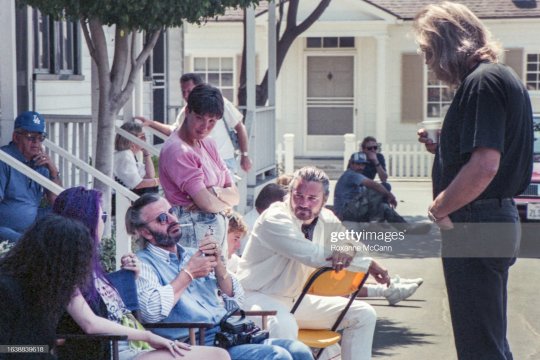
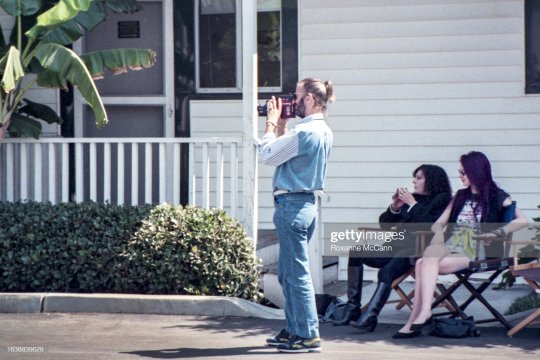

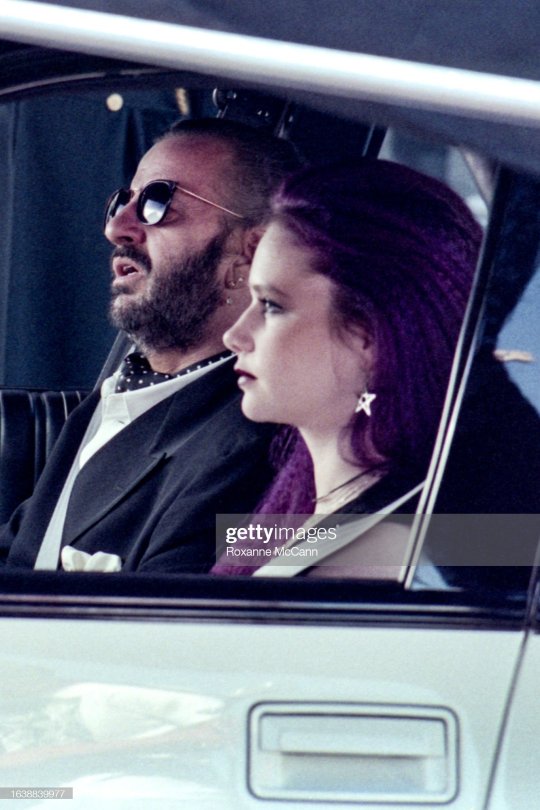
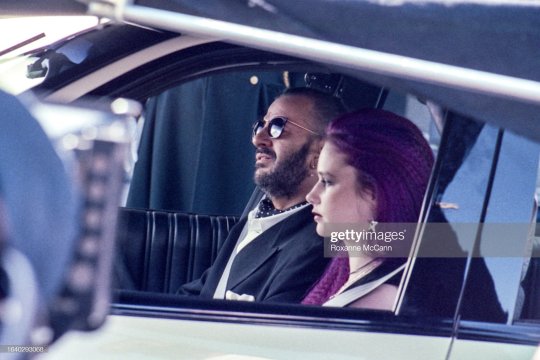
English singer, songwriter and actor and former Beatles drummer Ringo Starr (aka Sir Richard Starkey MBE) is filmed sitting next to his daughter Lee Starr in an Oldsmobile Cutlass on the set of an Oldsmobile commercial at Culver City Studios in July 1989 in Culver City, California.
In the studio were also present Maureen Tigrett (photos 1-3), director Joe Pytka (photo 1, standing in black), and Ringo's stunt double.
Some other photos show that Ringo's birthday (July 7th) was celebrated there.
(Photo by Roxanne McCann/Getty Images.)
#Lee Starkey#Ringo Starr#Maureen Cox#Maureen Starkey#Maureen Tigrett#Oldsmobile#1989#1989 Lee#Lee actress#Lee Oldsmobile#Oldsmobile Cutlass#culver city#California#Joe Pytka#make up artist#fashion designer#boutique owner#stylist#fashionista#1980s#1980s Lee#Roxanne McCann
34 notes
·
View notes
Text
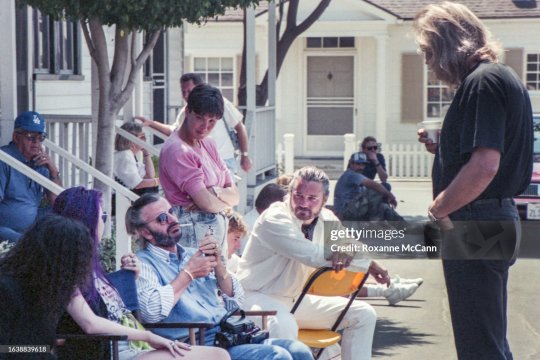
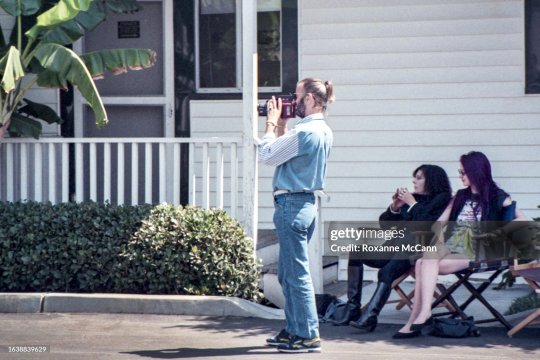



''English singer, songwriter, actor and former Beatles drummer Ringo Starr prepares to film an Oldsmobile commercial on a backlot at Culver City Studios in July 1989. Around him are crew members as well as hisdaughter Lee Starr (standing left of center with purple hair) and next to her, his ex-wife Maureen Starkey Tigrett''
41 notes
·
View notes
Text
DEKALB "KIDS"
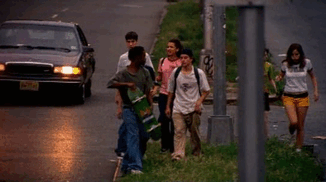
PART 1 OF 4
Dekalb, Illinois, where the excitement goes to die But hey, $14 rent, thanks, Dad, I'll survive.
I was bored out of my mind, a zombie in disguise.
Until I stumbled upon a rave crew, and it opened my eyes.
Danny and Raul, my new partners in crime.
We rocked Adidas and JNCO's we were in our prime.
We cruised down RT 47, with the music loud and proud.
To see Tony the Man, the one with some loud!
After Tony's pit stop, we were thrilled w delight.
To meet the rest of the crew, and party all night.
We pulled into the gravel drive, and what did we see, a hacky sack circle with kids in phat pants, just like me!
Wow! there appears to be some girls in this crew, it's so nice to see!. These girlsl stood alone wild and free.
We entered the screen door, and oh, the smell did abound.
Hair bleach and stale weed, a potent combo, smell that's per found.
Two boys descended from the loft, from above.
I think I could take these kids, if push came to shove.
I met Adonis, their leader, the king of the throne.
A man of mystery, truth be told.
The night soon filled with weirdness as we watch the night unfold.
The circle grew, and so did my confusion.
The crew were not of the norm for which they're choosing.
Jordan, Seth, Lee Shawn, Brian, and Scott, oh my. This crew of devients led by one guy
I tried to keep track, but it was like a game.
New faces emerged, and names got lost in the flame.
The evening wore on, and the circle got wide.
I was just trying to survive, with my sanity inside.
It's time to spark one up and pass it around.
Adonis was a DJ as the bass begins to pound!
Just as the sun dipped low, the beats started to rise,
A new face emerged, with a sly, knowing guise.
Hi, my name is John he said with conviction and pride.
I told him my name, which was the truth, no reason to lie.
"Let's step outside," he said, "it's too loud in here!"
We played the separation game, year by year.
Turns out we both knew Megan, the pre-raver queen
A lost girl, obsessed with our" DJ scene."
"Test her knowledge," he said, with a sly little grin.
Not knowing your past parties is a cardinal sin.
"Let's see if she's has knows her shit! Turns out she has no clue, not one bit.
Megan, the wannabe, trying to fit the mold.
A follower, not a leader, with a story yet untold.
She claimed to know the DJs and the tracks they'd play, but when we quizzed her hard, she faded away.
She knew the basics, but that's where it ends, no depth, no insight, just a surface-level trends.
She wanted to be part of the crew, to fit in with the crowd.
But when it came to the real deal, she was just a pretender obnoxious and loud!
Megan, the party girl, ended up on the floor one night.. Kids scattered around sleeping, it was quite the sight.
A night to remember, or so she'd roar
But Megan skills in the sack =A total bore!
Denise by her side, since Megan couldn't drive.
A duo of damsels, in a party-induced haze, kept alive.
John says here is what really took place: telling the story i had the look of awe upon my face.
Entered John, the slick one, with an Eddie Munster flair!
Rebel without a cause, not even a care.
He leaned in close, and Megan's heart skipped a beat
Under the spell of Jonny, his alter ego, he did not retreat
I was cornered, and the questioning began
"Tony, Tony, did you see him?" What was the plan?
Too late for another trip, I was off the hook.
I hopped in, and we cruised down the road like a getaway crook.
But then Jack's Oldsmobile beckoned and we were off to scoop up another.
Please stop at mc D's because I'm hungry hell, haven't had supper.
Eric was the mission, next stop, let's go!
This was another guy i did not know.
Ugh, who is this guy?! Annoying doesn't even begin to describe,
a rambling idiot, no off button, my sanity divides.
Five minutes in the car, felt like an eternity ride.
I needed an escape, before I lose my mind.
We ditched the wheels and hit the streets,
like kids of today we drummed to a different beat.
its a miracle we stayed out of trouble or committing a crime,
we'd all be facing a judge and paying a fine
Just 15 youth in the street's terrorizing the town.
we all headed for a party, we all said that were down.
As a crew, we made our move.
Not a care in the world with nothing to prove.
No more solo rides with Mr. Motor Mouth!
He stayed at the house, we kicked him out
his stories all bullshit and lies
I was finally free, there's nothing to hide.
it's just me being me. Ugh, who was that guy?!
Annoying doesn't even begin to describe
A rambling idiot, no off button, all he spews are all lies.
Five minutes in the car, felt like an eternity ride.
I needed a break before I lose my mind.
He fabricated everything, which is no surprise.
Written By Georie Saunders
Inspired by 1st encounter of My Crew! Circa 95"
2 notes
·
View notes
Text
The Patti Page Oldsmobile Show
I swear I haven’t gone car crazy (today’s earlier post was about TV shows sponsored by Chevrolet). It’s just that this seemed the best angle for me to take on my post about singer Patti Page (Clara Ann Fowler, 1927-2013). And it’s nice to have a theme. Eddie Cantor once said of Belle Baker that she was great as “Dinah Shore, Patti Page, Peggy Lee, and Judy Garland all rolled into one.” I bring…

View On WordPress
5 notes
·
View notes
Text
Muscle Cars, Colour, and the American V8
Colours have a storied history with cars. From the start with the Model T coming in any colour you want, as long as it was Japan Black, to the national racing colours that arose in the 50's, with British Racing Green, German Silver, Russo Italiano, etc. and onwards.
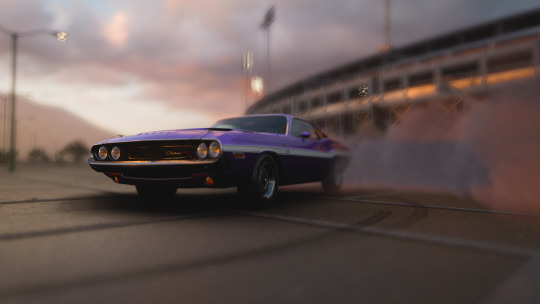
So when I tell you to think of, say, an old Dodge Challenger, what colour comes to mind? A sleek black? Purple? Maybe getting confused, thinking of a nice orange Charger instead? Black might be the universal constant when it comes to cars, but its no coincidence that Purple/Orange are the colours you might've associated with those cars. Back in the 60's and 70's, orange was the colour for the Charger, much like yellow was the Camaro, blue was the Mustang, and so on and so forth. And while I can't say all of these are necessarily the truth, it's just my own personal views anyway. When has anything I've said been entirely in the right?

There's pretty good reason for a lot of those colour associations, with the Charger being the most obvious, being the Duke Boy's General Lee. As unfortunate the name, and flag slapped on top of the car, are, it is still an incredibly famous paintjob and definitely had a long lasting influence on how people painted their cars, a legacy that still continues down south. The Challenger, however, was simply just a brilliantly beautiful color for the car, only really shared by the strange lime green color that was also prevalent at the time. Unfortunately, those colors have gone pretty far to the wayside, with the only one I've seen on a modern Charger being that disgusting neon green... which does not fit the absolute brick that is that car.
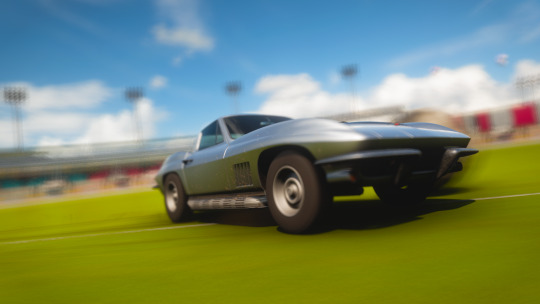
Over on the Chevy side of things, yellow is also a pretty obvious origin of popularity, being from Bumblebee. Y'know, the Transformer. Though, yellow isn't necessarily just exclusive to the Camaro. Corvette has been repping the colour for the racing side, with in modern days especially. Back in the day, though, silver was a pretty common colour of choice, if not a deep blue. Yellow has pretty obviously stuck with the Camaro nowadays, though it has added red to it's repertoire, as well as the Corvette keeping orange as the main colour of choice.


Speaking of deep blues, over on the classic Mustang side is this illustrious, deep blue and white styling that can't be matched. And if there's any place for it to originate, there is really only one source: Shelby. That blue is probably the most common colour to see on the old Cobra, and when they started working on the Mustang, white/blue became the standard for those, though originally white was the main colour. This has even persisted into the current day, with various different shades of blue. Even the insane Shelby 1000 was a nice deep blue.
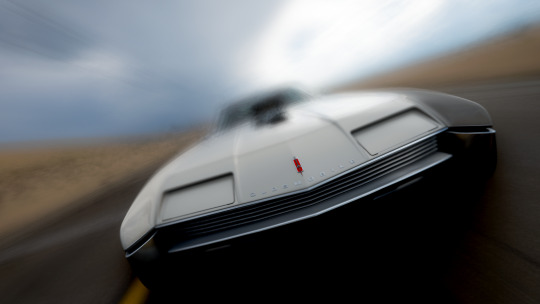

On the less popular and discontinued side of things, however, white was a pretty widespread colour as well. AMC, Buick, Oldsmobile, it fit into everything. The black accents of the GSX, the red and blue parts of the Rebel Machine making the most hardcore American car possible, and Oldsmobile had the nice white Toronado, and the gold accents of the Hurst/442 worked quite well as well.


Rather interestingly as well, Plymouth had a very similar color scheme to Dodge, with the Cuda being in orange and purple in the same way, though the two colors shared one singular car, with the former keeping the above shown black accent at the back, and the purple turning them a nice white to match. The car came in a massive amount of colours, much like many other cars of the time, but these two were the ones I've personally seen the most.
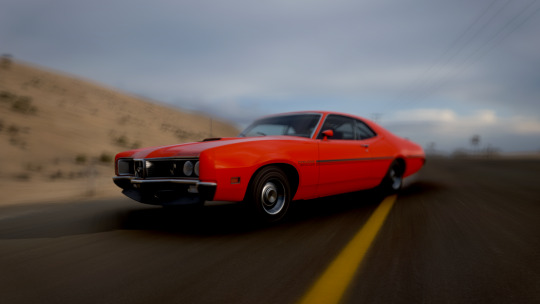
Speaking of orange, Mercury used the colour a lot as well, with the Cougar and Cyclone sporting it often... really, orange was a very popular colour back in the day. It's a shame its fallen so out of style, as many colours have. Everything now is either greyscale, red or blue, with very few daring to expand into other, more exotic choices, even if they don't necessarily look good.
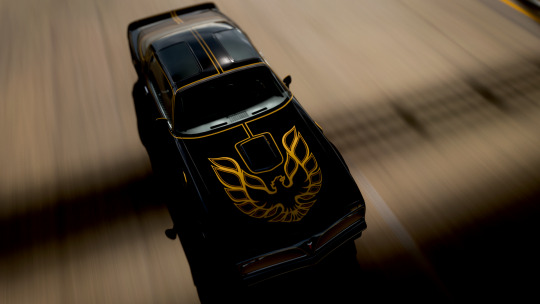
And, well, rounding out with a car that dared to look different, before becoming quintessentially greyscale, the Firebird Trans-Am. Sure, the most notable part of it is the namesake Firebird emblazoned upon the bonnet of the car, but it hardly came in anything aside from black or white once you get past the mid-70s, and it even lost the bird bonnet once you get into the 80's, part in due to the fame it regained from becoming KITT in Night Rider. Red did eventually come back in style for it in the twilight years of the car's existence, but by then it was little more than a badge swap.

All of this doesn't necessarily apply to just muscle cars, as I said in the beginning, though. You've got stuff like the chameleon paint jobs of the later TVR models, Midnight Purple on the Skylines, Lamborghini and Ferrari sporting yellow and red respectively, even Rolls-Royce Silver being a named colour of many a car. Colour has a massive place in car culture, as obvious a statement that is, to the point where it can drive up a price just from the right paintjob, because seriously, who is going to buy a puke green Hellcat? Really, I could've done a broader scope for this post, covered entire brands and their famous colors, but I feel that muscle cars are a good enough scope for that, especially on the American side. Blue is the colour for Ford nowadays, after all.
All of this is to say "I don't know how to end this post."
4 notes
·
View notes
Text
OCTOBER HORROR MOVIES 2023 #19 EVIL DEAD RISE
Sam Raimi had a lot of plans for his Evil Dead franchise. There was supposed to be a fourth film in his own series of movies. There was supposed to be a sequel to the 2013 sort-of reboot Evil Dead. There was supposed to be a further movie that tied these two disparate storylines together. There was even supposed to be a fourth season of Ash vs. Evil Dead. None of these things happened. Instead, we got this film, which starts the formula over with a brand-new protagonist stumbling into a brand-new version of the infamous Book of the Dead, which conjures up those same old undying, body-snatching, blood-drenched demons we've all come to know and love.
It's no substitute for all the grand plans that Raimi and company have tossed out over the years, but Evil Dead Rise ain't too shabby. After a fake-out opening in a classic cabin-in-the-woods setting that makes it look like we're getting another rehash of everything we've seen before, the movie shifts gears to a new location, with a family trapped in an LA tenement. Writer/director Lee Cronin employs a lot of the aesthetic trappings of a Raimi movie--dutch angles, odd camera placements, those classic POV tracking shots, an overblown orchestral score--but without Raimi's campiness. It's not a full-blown "gritty reboot" (even if the movie has no compunction about killing a child onscreen), but it is a lot more serious than most of Raimi's films, even if the decaying urban setting made me think of Darkman more than once.
Most of the movie focuses on the family's terror in dealing with their suddenly changed loved ones. Cronin previously directed The Hole in the Ground, which is about a hole in the ground, but it is also about a mother's terror in dealing her suddenly changed child. Some guys just have a theme, and they stick to it. You know that one scene that's always in zombie movies where someone just can't come to terms with the fact that their mother/husband/boyfriend/child is now a murderous monster? That scene is most of this film. But don't worry, you old-school Evil Dead fans! It does eventually get to classically gonzo places (including a body-horror monstrosity straight out of The Thing and a cascade of blood straight out of The Shining), and you will get to see your beloved shotgun-and-chainsaw combination. A demon says "I'll swallow your soul!" There's a chant of "Dead by dawn!" Our main character eventually says, "Come get some." There's a yellowish Oldsmobile (though, sadly, not the Delta 88 that Raimi always shoehorned into his films). There's even a teeny-tiny cameo from Bruce Campbell that you would never know was there unless you're the kind of dork who reads the entire Trivia section of IMDB, and I am exactly that kind of dork.
You will be able to check off every box on your Evil Dead bingo card. Just don't leave this movie excited for a whole new slate of Evil Dead films in the near future, because, at this rate, you're going to be bitterly disappointed for at least another decade.
#horror movies#movie review#evil dead rise#evil dead#sam raimi#lee cronin#dead by dawn#bruce campbell
0 notes
Text
I’m With You -Part Ten: the end// Lee (Bones and All)
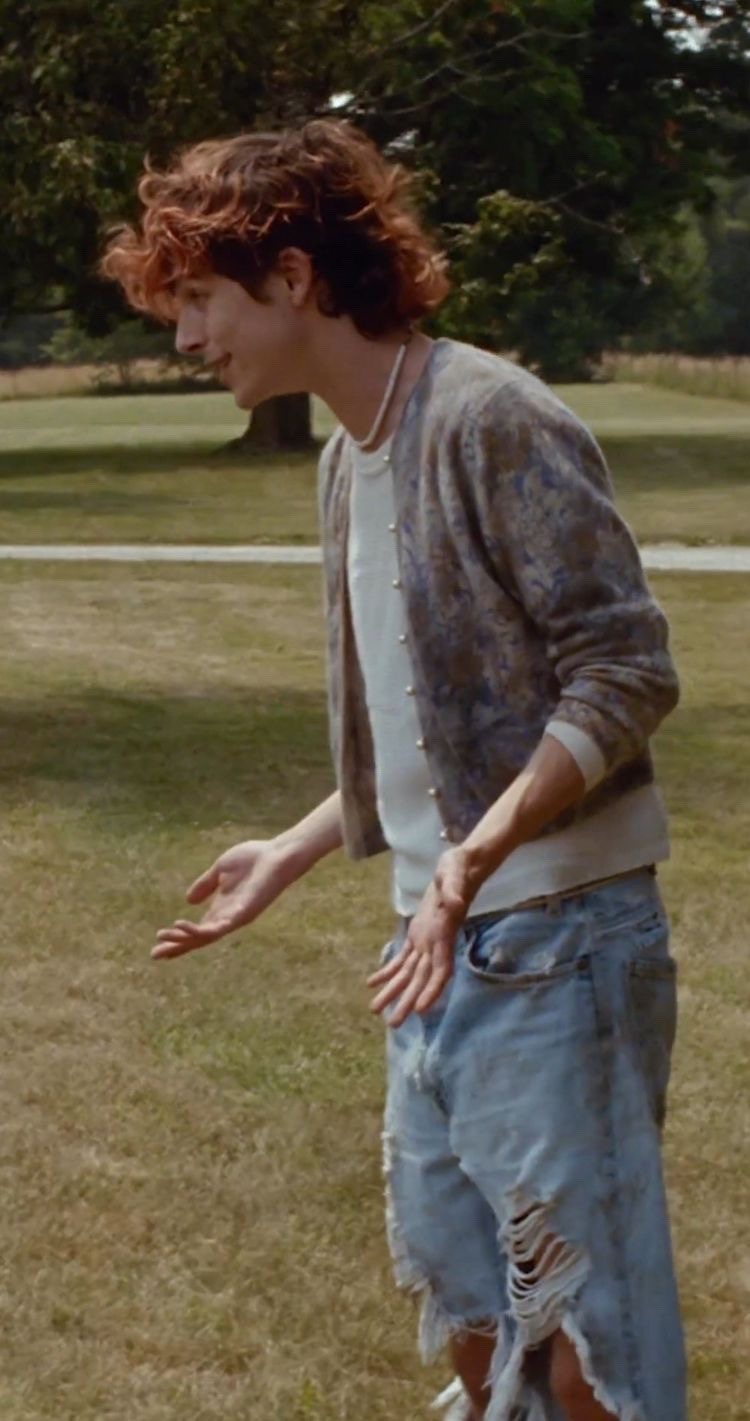
Heyy, I’m so sorry about the long delay, but here’s the ending.
Warnings: mention of cannibalism, family trauma, Lee crying, mention of slight weight loss
You and Lee were officially having a baby. Tests had said ‘yes,’ and the ultrasound confirmed it. You were concerned about finances, of course, but the two of you were doing okay. And you could still travel as you always had. You were also excited about the idea of settling down, and having a home somewhere with Lee and your child.
But Lee was acting different. He wasn’t upset about the baby or anything, but it did seem to make him nervous. You didn’t really understand why; he’d make a great parent. You thought of how gentle and understanding he was with you. He was the best person you’d ever known. As far as you were concerned: Lee had nothing to worry about.
He wanted to go see Kayla and tell her about the baby. He seemed happy, and so were you. But you could sense something happening inside him, below the surface. “Lee, honey, let me help you.” you insisted, watching him pack up your things into your Oldsmobile. “No way, baby. You’re not doing an excessive physical labor if I’m around. You just worry about keeping my baby safe.”
You shook your head, he could still make you blush now, just as much as when you first met him. He tossed in a duffel bag, slammed the hatch shut and when he looked at you, you said, “I don’t think lifting some luggage would do any harm.” Lee came up to you, put his hands on your shoulders, “Well, we’re not gonna risk it.” He kissed you on your forehead and said, “All right, let’s go!”
You were excited to be on the road again. You and Lee felt almost more at home just driving somewhere. After a while, you were felt yourself growing sleepy, and you leaned over on him, resting your head on his shoulder and your arm linked snuggly around his. For some reason, he felt smaller to you. Like when your elbow gazed his side, there was no cushion of flesh there. Lee was a tall and skinny type of guy, so he had never been huge or anything, but as you looked over at him, he looked skinnier than usual.
Even in the face, he looked slimmer, with his cheeks sunken in some. You couldn't believe that it took you so long to notice something. You guessed that the new of the baby and all kept you from paying much attention to his appearance. It was really strange because he was eating normally, nothing about his diet was out of the ordinary. And then you got to thinking: the bad thing.
Had he stopped doing it? You wondered this to yourself silently at first, then decided to ask him straight up. "Lee have you been eating?" He chuckled, "Yes, I've been eating. You and I have like every meal together, y/n." "You know what I mean." you said, lowly. Lee remained quiet for a while, keeping his eyes on the road to avoid looking at you.
After a few minutes, he sighed, "I haven't..." he shook his head, "done it for a while." "Okay. Look, I don't want to argue about this, or even try to encourage you to do it. But you need it to survive..." "No." Lee said, firmly. "I don't need it, y/n. I can stop." You nodded, and put your arm around him, gently patting the curls at the back of his head to soothe him.
"By why all of sudden, Lee? Why now? Is it the baby?" you asked. "Yes. I don't want the kid to know that about me and I'm actually scared shitless that I'm going to pass it down to them." "Oh, Lee." you cooed, hugging him from the side and kissing him on the cheek. "Honey, why didn't you say something about this earlier? I don't want you to think about that or worry. It will be okay. Our child will be perfect."
Lee shook his head, and it was clear that he was growing more uneasy. He turned the steering wheel, pulling the car over onto the side of the road. "What are we doing?" He didn't say anything, he just put the car in park. "Lee, what's going on?" you were now quite worried about him. He opened the car door and stepped out. He turned to look at you through the open window of the driver's side door.
"I'm sorry, but please can you just stop talking, babe? I need a minute." he spoke firmly, but not harshly. You could see in his eyes that he was feeling troubled on a deeper level than you had ever known him to. He then turned and walked away from the vehicle. You sat there in the car, watching the man you love walking away as he wrestled internally with his thoughts. Your visit with Kayla could wait. Lee obviously needed to work through some things, and your heart ached for him.
You saw that Lee settled into a secluded spot near a small creek that was surrounded by a line of trees on either side. You gave him about an hour to be alone and you couldn't wait any longer. You needed to know what was going on in his head. You got out of the car, and walked over to where he was sitting to join him on the patch of grass.
He looked at you as you sat next to him, but his expression wasn’t necessarily readable. “Lee, what’s going on? Talk to me.” He inhaled and breathed out sharply, “I told you. I’m scared that this…thing will be passed down to our child. That’s why I’ve stopped doing it. I just can’t stand the thought of it anymore. I can’t-" his voice wavered, “I can’t have that, y/n. I don’t want that for the kid.” “Lee, stop,” you scooted closer to him, touching his shoulder.
“No, I’m serious, y/n.” Lee cried. “One day you’ll find your child with blood on them, you’ll realize what happened, and what they are. I don’t want that for you, it’s too much. The trauma that I’ve been through with my own father,” he shook his head, “I don’t want that for anyone else.” He put his hand on your cheek, caressing your skin softly. “Especially not you. I don’t want that kind of life for you.”
“It’s a risk, I know.” you said, “But I’m willing to chance it. The love we have for each other could be the end to your curse. We’ll just love and nurture this child, and hope and pray that it doesn’t need the bad thing. Okay?” Lee looked into your eyes, and you wiped his tears. “Just love me, Lee, and I’ll love you. That’s what we’ll do for this baby.” He pursed his lips, and sniffed his tears back. “Okay.”
You took your lover by the hand and headed back to the car. He stopped you before you got in, and said, “So you really think we can do this? This parenting thing?” You turned on your heels and leaned against the side of the car, “I think we can do anything.” He gave you a smile and slid his hands onto your hips. He closed the gap between you, and gave you a tender kiss on the lips.
65 notes
·
View notes
Note
I do kinda like the Oldsmobile one he did with Lee that was cute!
Oh my god
5 notes
·
View notes
Text
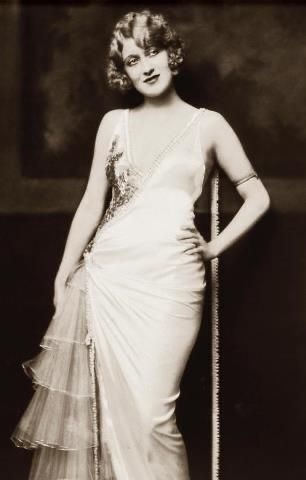
Ruth Etting (November 23, 1896 – September 24, 1978) was an American singing star, vaudevillian and actress of the 1920s and 1930s, who had over 60 hit recordings and worked in stage, radio, and film. Known as "America's sweetheart of song", her signature tunes were "Shine On, Harvest Moon", "Ten Cents a Dance" and "Love Me or Leave Me".
Her other popular recordings included "Button Up Your Overcoat", "Mean to Me", "Exactly Like You" and "Shaking the Blues Away".
As a young girl in Nebraska, Etting had wanted to be an artist; she drew and sketched everywhere she was able. At sixteen, her grandparents decided to send her to art school in Chicago. While Etting attended class, she found a job at the Marigold Gardens nightclub; after a short time there, Etting gave up art classes in favor of a career in show business. Etting, who enjoyed singing in school and church, never took voice lessons. She quickly became a featured vocalist at the club. Etting was then managed by Moe Snyder, whom she married in 1922. Snyder made arrangements for Etting's recording and film contracts as well as her personal and radio appearances. She became nationally known when she appeared in Flo Ziegfeld's Follies of 1927.
Etting intended to retire from performing in 1935, but this did not happen until after her divorce from Snyder in 1937. Harry Myrl Alderman, Etting's pianist, was separated from his wife when he and Etting began a relationship. Snyder did not like seeing his former wife in the company of other men and began making telephone threats to Etting in January 1938. By October, Snyder traveled to Los Angeles and detained Alderman after he left a local radio station; he forced the pianist to take him to the home of his ex-wife at gunpoint. Saying he intended to kill Etting, Alderman, and his own daughter, Edith, who worked for Etting, Snyder shot Alderman. Three days after Alderman was shot, his wife filed suit against Etting for alienation of affections.
While Alderman and Etting claimed to have been married in Mexico in July 1938, Alderman's divorce would not be final until December of that year. The couple was married during Moe Snyder's trial for attempted murder in December 1938. Etting and Alderman relocated to a farm outside of Colorado Springs, Colorado, where they were primarily out of the spotlight for most of their lives. Her fictionalized story was told in the 1955 musical film Love Me Or Leave Me with Doris Day as Ruth Etting and James Cagney as Snyder.
Etting was born on November 23, 1896, in David City, Nebraska, to Alfred Etting, a banker, and Winifred (Kleinhan). Her mother died when she was five years old and she then went to live with her paternal grandparents, George and Hannah Etting. Her father remarried and moved away from David City and was no longer a part of his daughter's life. Etting's grandfather, George, owned the Etting Roller Mills; to the delight of his granddaughter, George Etting allowed traveling circuses and shows to use the lot behind the mills for performances.
Etting was interested in drawing at an early age; she drew and sketched anywhere she was able. Her grandparents were asked to buy the textbooks she had used at the end of a school term because Etting had filled them with her drawings. She left David City at the age of sixteen to attend art school in Chicago. Etting got a job designing costumes at the Marigold Gardens nightclub, which led to employment singing and dancing in the chorus there. She gave up art school soon after going to work at Marigold Gardens. Before turning exclusively to performing, Etting worked as a designer for the owner of a costume shop in Chicago's Loop; she was successful enough to earn a partnership in the shop through her work.
While she enjoyed singing at school and in church, Etting never took voice lessons. She said that she had patterned her song styling after Marion Harris, but created her own unique style by alternating tempos and by varying some notes and phrases. Describing herself as a "high, squeaky soprano" during her days in David City, Etting developed a lower range singing voice after her arrival in Chicago which led to her success. Her big moment came when a featured vocalist suddenly became ill and was unable to perform. With no other replacement available, Etting was asked to fill in. She quickly changed into the costume and scanned the music arrangements; the performer was male, so Etting tried to adjust by singing in a lower register. She became a featured vocalist at the nightclub.
Etting described herself as a young, naive girl when she arrived in Chicago. Due to her inexperience in the ways of the big city, she became reliant on Snyder after their meeting. Etting met gangster Martin "Moe the Gimp" Snyder in 1922, when she was performing at the Marigold Gardens. Snyder, who divorced his first wife to marry Etting, was well-acquainted with Chicago's nightclubs and the entertainers who worked in them; he once served as a bodyguard to Al Jolson. Snyder also used his political connections to get bookings for Etting, who was called "Miss City Hall" because of Snyder's influence in Chicago. Etting married Snyder on July 17, 1922 in Crown Point, Indiana. She later said she married him "nine-tenths out of fear and one-tenth out of pity." Etting later told her friends, "If I leave him, he'll kill me." He managed her career, booking radio appearances and eventually had her signed to an exclusive recording contract with Columbia Records.
The couple moved to New York in 1927, where Etting made her Broadway debut in the Ziegfeld Follies of 1927. Irving Berlin had recommended her to showman Florenz Ziegfeld. Etting nervously prepared to sing for Ziegfeld at the audition. However, he did not ask her to sing at all; only to walk up and down the room. She was hired on that basis because Ziegfeld did not hire women with big ankles. While the original plan for the show was for Etting to do a tap dance after singing "Shaking the Blues Away", she later remembered she was not a very good dancer. At the show's final rehearsal, Flo Ziegfeld told her, "Ruth, when you get through singing, just walk off the stage". Etting also appeared in Ziegfeld's last "Follies" in 1931.
She went on to appear in a number of other hit shows in rapid succession, including Ziegfeld's Simple Simon and Whoopee!. Etting was not originally signed to perform in Simple Simon; she became part of the cast at the last minute when vocalist Lee Morse was too intoxicated to perform. Ziegfeld asked Etting to replace Morse; she hurried to Boston, where the show was being tried out prior to Broadway. When Etting arrived, songwriters Rodgers and Hart discovered that the song "Ten Cents a Dance" was not written for Etting's voice range. The three spent the night rewriting the song so Etting could perform it.
Toward the end of Simple Simon's Broadway run, Etting persuaded Ziegfeld to add "Love Me Or Leave Me" to the show though the song was originally written for Whoopee!. She had recorded the song in 1928, but Etting's new version of it was impressive enough to earn her a Vitaphone contract to make film shorts.
In Hollywood, Etting made a long series of movie shorts between 1929 and 1936, and three feature movies in 1933 and 1934. She described the short films as either having a simple plot to allow for her to sing two songs or with no plot at all. The idea was to have Etting sing at least two songs in the film. While she received a marquee billing for Roman Scandals, Etting had only two lines in the film and sang just one song. Etting believed she might have had more success in full-length films if she had been given some acting lessons. Her perception was that the studios viewed her only as a vocalist. She later recalled, "I was no actress, and I knew it. But I could sell a song". In 1936, she appeared in London in Ray Henderson's Transatlantic Rhythm. Etting quit the show because she and the other performers had not been paid.
Etting was first heard on radio station WLS when she was living in Chicago. Her appearance drew so much fan mail the station signed her to a year's contract for twice weekly performances. She had her own twice weekly 15 minute radio show on CBS in the 1930s. By 1934, she was on NBC with sports announcer Ted Husing doing the announcing and Oldsmobile sponsoring her program.
After an unissued test made by Victor on April 4, 1924, Etting was signed to Columbia Records in February 1926. She remained at Columbia through June 1931, when she split her recording between ARC (Banner, Perfect, Romeo, Oriole, etc.) and Columbia through March 1933. She signed with Brunswick and remained there until May 1934, when she re-signed with Columbia through July 1935. After a solitary Brunswick session in March 1936, she signed with the British label Rex and recorded two sessions in August and September, 1936. Etting returned to the US and signed with Decca in December 1936 and recorded until April 1937, when she basically retired from recording.
Etting saved some of her paycheck each week, regardless of the amount she was making at the time. Her friends said she invested in California real estate rather than the stock market. Etting, who made many of her own clothes, did her own housekeeping and lived frugally, initially announced her retirement in 1935. It is not clear why she did not go through with her announced plans, but she issued a second statement regarding retirement after filing for divorce from Snyder in November 1937.
Snyder's aggressive and controlling management style began to cause problems for Etting; during her work with Whoopee! on Broadway, Snyder was a constant presence. He was never without a gun and enjoyed poking people with it while saying "Put your hands up!" then laughing when their fright was evident. Snyder also persisted in cornering Ziegfeld because he believed Etting's role in the musical could be improved. Ziegfeld had a different opinion and indicated nothing would be changed. Snyder would then mumble that it was not a suggestion but a demand.
By 1934 she was having difficulty getting engagements. Snyder's arguing and fighting at venues where Etting was employed caused her to be passed by for jobs in the United States. In 1936, she thought taking work in England might be the answer, but Snyder created problems while she was working there also. Soon after the couple arrived in England, Snyder became involved in a street fight which created adverse publicity for Etting. She divorced Moe Snyder on the grounds of cruelty and abandonment on November 30, 1937. Snyder did not contest the divorce and received a settlement from his former wife. Etting gave her ex-husband half of her earnings at the time, $50,000, some securities and a half interest in a home in Beverly Hills, California. She deducted the gambling debts of Snyder she had paid and the costs she had paid for a home for Snyder's mother.
Etting fell in love with her pianist, Myrl Alderman, who was separated from his wife. In January 1938, she began receiving threatening telephone calls from Snyder, who initially claimed Etting withheld assets from him when the divorce settlement was made. Though the couple was divorced, Snyder was also upset because of reports that she was seeing another man. Snyder told Etting that he would come to California and kill her. When Snyder telephoned and found Etting unavailable, he told his daughter Edith that he "would fix her ticket, too". He called again that evening; this time Etting took the call with her cousin, Arthur Etting, listening on an extension. Etting requested police protection after the telephone call and arranged for private protection. Apparently believing the danger was over when Snyder did not appear soon after his telephone call, Etting released her bodyguards a few days later.
On October 15, 1938, Snyder detained Myrl Alderman at a local radio station and forced the pianist to take him to his former wife at gunpoint. In the house at the time were Etting and Edith Snyder. Edith, Snyder's daughter by a previous marriage, worked for Etting and remained living with her after the divorce. Snyder held Etting and Alderman at gunpoint; when told his daughter was in another part of the house, he made Etting call her into the room. Snyder said he intended to kill all three, and told them to be quiet. When Myrl Alderman attempted to speak, Snyder shot him. Snyder then told his ex-wife, "I've had my revenge, so you can call the police."
Snyder claimed Myrl Alderman pulled a gun and shot at him first and that his ex-wife would not file charges against him because she still loved him. He also claimed he was drunk when he made the telephone threats to Etting in January 1938, saying that at the time his intentions were to kill both his ex-wife and himself. Ruth Etting said that the only gun in the home belonged to her, and after the shooting of Alderman, she was able to go into her bedroom and get it. Upon seeing Etting's gun, Moe Snyder wrested it away from her; it landed on the floor. Snyder's daughter, Edith, picked it up and held it on her father, shooting at him but hitting the floor instead. During a police reenactment of the shooting three days later, Edith Snyder said that she fired at her father to save Ruth Etting, weeping as she continued, "I don't yet know whether I am sorry I missed my Dad or whether I am glad". Snyder was accused of attempting to murder his ex-wife, his daughter, and Etting's accompanist, Myrl Alderman, the kidnapping of Alderman, as well as California state gun law violations.
Three days after the shooting of Myrl Alderman, the pianist's second wife, Alma, sued Etting for alienation of her husband's affections. Though Etting and Alderman claimed to have been married in Tijuana, Mexico in July 1938, Alma Alderman said any marriage was invalid, because her divorce from Myrl Alderman would not be final until December 1938. Police investigators could find no record of the couple's Mexican marriage. Etting publicly invited Alma Alderman to visit her husband in the hospital, in an effort to see if the couple could reconcile.
Ruth Etting testified that she was not married to Alderman. During the course of the trial, there was also a question of the validity of Alderman's marriage to Alma. Alderman's first wife, Helen, obtained an interlocutory decree on January 7, 1935; the divorce became final one year later. On January 9, 1935, Alderman married Alma in Mexico. The second Mrs. Alderman called Moe Snyder to the stand as a witness regarding an attraction between her husband and Etting. Helen Alderman Warne also appeared in court, claiming that Alma Alderman had spirited Myrl away from her. Warne added that she had married and divorced the pianist twice. Alma Alderman's lawsuit ended in December 1939, with the court finding that she was not entitled to damages from Ruth Etting.
The testimony in both trials brought much personal information into the public eye. Snyder, who claimed to still be in love with his ex-wife, gave Etting a diamond and platinum bracelet which she accepted after Snyder's telephone threat in January 1938. Etting testified that she agreed with her ex-husband's statement to police that Snyder was either drunk or out of his mind when he threatened her by phone. Snyder's attorney initially tried to prevent Etting from testifying against Snyder with a charge that the divorce she obtained in Illinois was invalid because she was a resident of California at that time.
During the trial, Snyder's attorney portrayed Ruth Etting as a calculating woman who had married Moe Snyder strictly for the benefit of her career, and that she divorced him in favor of being with another, younger man (Alderman). Snyder's attorney echoed his client's claim of self-defense and said his client never intended to kill Etting, his daughter, and Myrl Alderman. The attorney further claimed that if Snyder intended to kill the pianist, he had ample time to do so while he held a gun on Alderman during the drive from the radio station to the home where the shooting took place.
Etting married Alderman, who was almost a decade her junior, on December 14, 1938 in Las Vegas, during Moe Snyder's trial for attempted murder. Snyder was convicted of attempted murder, but released on appeal after one year in jail. Snyder won a new trial but returned to jail in January 1940 in lieu of bail. In August 1940, Myrl Alderman asked the district attorney to drop further prosecution attempts against Snyder for the 1938 shooting.
Etting, who had retired from performing prior to the shooting and subsequent trials, briefly had a radio show on WHN in 1947. She also accepted an engagement at New York's Copacabana in March 1947. Etting traveled alone to New York and during a newspaper interview, was asked if she had ever seen Moe Snyder again. She replied, "No, I hope I never do." and said that her husband never went to bed without a gun.
The couple relocated to an eight-acre farm outside of Colorado Springs in 1938. Alderman, who was raised in Colorado Springs, operated a restaurant there for a time. Etting and Alderman remained married until his death in Denver on November 28, 1966; he was buried in Evergreen Cemetery, Colorado Springs. Etting died in Colorado Springs in 1978, aged 81. She was survived by a stepson, John Alderman, and four grandchildren. Alderman and Etting are now interred at the Shrine of Remembrance Mausoleum in Colorado Springs, Colorado.
Her life was the basis for the fictionalized 1955 film, Love Me or Leave Me, which starred Doris Day (as Etting), James Cagney (as Snyder) and Cameron Mitchell (as Alderman). Etting, Myrl Alderman and Moe Snyder all sold their rights to the story to MGM; Snyder was living in Chicago in 1955. Etting expressed sadness that "the real highlight of my life", her marriage to Alderman, was omitted from the film. Shortly before her death, Etting said she thought the screen portrayal of her was too tough and that Jane Powell would have been a better choice for the lead.
Etting has a star on the Hollywood Walk of Fame for her work in films, located on the north side of the 6500 block of Hollywood Boulevard. Her recordings of Love Me Or Leave Me (2005) and Ten Cents a Dance (1999) are part of the Grammy Hall of Fame.
#ruth etting#classic hollywood#classic stars#golden age of hollywood#singer#1920s hollywood#1930s hollywood
11 notes
·
View notes
Text
Events 9.13
585 BC – Lucius Tarquinius Priscus, king of Rome, celebrates a triumph for his victories over the Sabines, and the surrender of Collatia. 509 BC – The Temple of Jupiter Optimus Maximus on Rome's Capitoline Hill is dedicated on the ides of September. 379 – Yax Nuun Ahiin I is crowned as 15th Ajaw of Tikal 533 – Belisarius of the Byzantine Empire defeats Gelimer and the Vandals at the Battle of Ad Decimum, near Carthage, North Africa. 1229 – Ögedei Khan is proclaimed Khagan of the Mongol Empire in Kodoe Aral, Khentii: Mongolia. 1437 – Battle of Tangier: a Portuguese expeditionary force initiates a failed attempt to seize the Moroccan citadel of Tangier. 1501 – Italian Renaissance: Michelangelo begins work on his statue of David. 1504 – Queen Isabella and King Ferdinand issue a Royal Warrant for the construction of a Royal Chapel (Capilla Real) to be built. 1541 – After three years of exile, John Calvin returns to Geneva to reform the church under a body of doctrine known as Calvinism. 1584 – San Lorenzo del Escorial Palace in Madrid is finished. 1609 – Henry Hudson reaches the river that would later be named after him – the Hudson River. 1645 – Wars of the Three Kingdoms: Scottish Royalists are defeated by Covenanters at the Battle of Philiphaugh. 1743 – Great Britain, Austria and the Kingdom of Sardinia sign the Treaty of Worms. 1759 – Battle of the Plains of Abraham: the British defeat the French near Quebec City in the Seven Years' War, known in the United States as the French and Indian War. 1782 – American Revolutionary War: Franco-Spanish troops launch the unsuccessful "grand assault" during the Great Siege of Gibraltar. 1788 – The Philadelphia Convention sets the date for the first presidential election in the United States, and New York City becomes the country's temporary capital. 1791 – King Louis XVI of France accepts the new constitution. 1808 – Finnish War: In the Battle of Jutas, Swedish forces under Lieutenant General Georg Carl von Döbeln beat the Russians, making von Döbeln a Swedish war hero. 1812 – War of 1812: A supply wagon sent to relieve Fort Harrison is ambushed in the Attack at the Narrows. 1814 – In a turning point in the War of 1812, the British fail to capture Baltimore. During the battle, Francis Scott Key composes his poem "Defence of Fort McHenry", which is later set to music and becomes the United States' national anthem. 1843 – The Greek Army rebels (OS date: September 3) against the autocratic rule of king Otto of Greece, demanding the granting of a constitution. 1847 – Mexican–American War: Six teenage military cadets known as Niños Héroes die defending Chapultepec Castle in the Battle of Chapultepec. American troops under General Winfield Scott capture Mexico City in the Mexican–American War. 1848 – Vermont railroad worker Phineas Gage survives an iron rod 1+1⁄4 inches (3.2 cm) in diameter being driven through his brain; the reported effects on his behavior and personality stimulate discussion of the nature of the brain and its functions. 1862 – American Civil War: Union soldiers find a copy of Robert E. Lee's battle plans in a field outside Frederick, Maryland. It is the prelude to the Battle of Antietam. 1882 – Anglo-Egyptian War: The Battle of Tel el-Kebir is fought. 1898 – Hannibal Goodwin patents celluloid photographic film. 1899 – Henry Bliss is the first person in the United States to be killed in an automobile accident. 1899 – Mackinder, Ollier and Brocherel make the first ascent of Batian (5,199 m – 17,058 ft), the highest peak of Mount Kenya. 1900 – Filipino insurgents defeat a small American column in the Battle of Pulang Lupa, during the Philippine–American War. 1906 – The Santos-Dumont 14-bis makes a short hop, the first flight of a fixed-wing aircraft in Europe. 1914 – World War I: The Battle of Aisne begins between Germany and France. 1922 – The final act of the Greco-Turkish War, the Great Fire of Smyrna, commences. 1923 – Following a military coup in Spain, Miguel Primo de Rivera takes over, setting up a dictatorship. 1933 – Elizabeth McCombs becomes the first woman elected to the New Zealand Parliament. 1942 – World War II: Second day of the Battle of Edson's Ridge in the Guadalcanal Campaign. U.S. Marines successfully defeated attacks by the Japanese with heavy losses for the Japanese forces. 1944 – World War II: Start of the Battle of Meligalas between the Greek Resistance forces of the Greek People's Liberation Army (ELAS) and the collaborationist security battalions. 1948 – Deputy Prime Minister of India Vallabhbhai Patel orders the Army to move into Hyderabad to integrate it with the Indian Union. 1948 – Margaret Chase Smith is elected United States senator, and becomes the first woman to serve in both the U.S. House of Representatives and the United States Senate. 1953 – Nikita Khrushchev is appointed General Secretary of the Communist Party of the Soviet Union. 1956 – The IBM 305 RAMAC is introduced, the first commercial computer to use disk storage. 1956 – The dike around the Dutch polder East Flevoland is closed. 1962 – An appeals court orders the University of Mississippi to admit James Meredith, the first African-American student admitted to the segregated university. 1964 – South Vietnamese Generals Lâm Văn Phát and Dương Văn Đức fail in a coup attempt against General Nguyễn Khánh. 1964 – Martin Luther King Jr. addresses a crowd of 20,000 West Berliners on Sunday, in Waldbühne. 1968 – Cold War: Albania leaves the Warsaw Pact. 1971 – State police and National Guardsmen storm New York's Attica Prison to quell a prison revolt, which claimed 43 lives. 1971 – Chairman Mao Zedong's second in command and successor Marshal Lin Biao flees China after the failure of an alleged coup. His plane crashes in Mongolia, killing all aboard. 1977 – General Motors introduces Diesel engine, with Oldsmobile Diesel engine, in the Delta 88, Oldsmobile 98, and Oldsmobile Custom Cruiser models amongst others. 1979 – South Africa grants independence to the "homeland" of Venda (not recognised outside South Africa). 1982 – Spantax Flight 995 crashes at Málaga Airport during a rejected takeoff, killing 50 of the 394 people on board. 1985 – Super Mario Bros. is released in Japan for the NES, which starts the Super Mario series of platforming games. 1987 – Goiânia accident: A radioactive object is stolen from an abandoned hospital in Goiânia, Brazil, contaminating many people in the following weeks and causing some to die from radiation poisoning. 1988 – Hurricane Gilbert is the strongest recorded hurricane in the Western Hemisphere, later replaced by Hurricane Wilma in 2005 (based on barometric pressure). 1989 – Largest anti-Apartheid march in South Africa, led by Desmond Tutu. 1993 – Israeli Prime Minister Yitzhak Rabin shakes hands with Palestine Liberation Organization chairman Yasser Arafat at the White House after signing the Oslo Accords granting limited Palestinian autonomy. 1997 – A German Air Force Tupolev Tu-154 and a United States Air Force Lockheed C-141 Starlifter collide in mid-air near Namibia, killing 33. 2001 – Civilian aircraft traffic resumes in the United States after the September 11 attacks. 2007 – The Declaration on the Rights of Indigenous Peoples is adopted by the United Nations General Assembly. 2007 – The McLaren F1 team were found guilty of possessing confidential information from the Ferrari team, and were fined $100 million and were excluded from the constructors' championship standings. 2008 – Delhi, India, is hit by a series of bomb blasts, resulting in 30 deaths and 130 injuries. 2008 – Hurricane Ike makes landfall on the Texas Gulf Coast of the United States, causing heavy damage to Galveston Island, Houston, and surrounding areas. 2013 – Taliban insurgents attack the United States consulate in Herat, Afghanistan, with two members of the Afghan National Police reported dead and about 20 civilians injured. 2018 – The Merrimack Valley gas explosions: One person is killed, 25 are injured, and 40 homes are destroyed when excessive natural gas pressure caused fires and explosions.
3 notes
·
View notes
Text
March History
March 16 1751 - US President James Madison, born March 16, 1751 in Port Conway, Virginia, died on June 28, 1836 in Orange County, Virginia.
1850 - Nathaniel Hawthorne's The Scarlet Letter was published.
1926 - American Robert H. Goddard launched the world's first liquid-fueled rocket at Auburn, Massachusetts. It reached a height of 41 feet.
1942 - The first V-2 rocket test launched. It exploded at lift-off.
1945 - Tsutomu Yamaguchi was the only individual who witnessed and survived both atom bombs in Japan, Hiroshima on August 6th, and Nagasaki on August 9.
1958 - The Ford Motor Company produced its 50 millionth automobile, a Thunderbird,
1961 - Goddard Space Flight Center, in Greenbelt, MD, was formally dedicated.
1968 - General Motors produces its 100 millionth automobile, an Oldsmobile Toronado.
1978 - The Amoco Cadiz wrecked off the coast of Portsall, France, spilling 68 million gallons of oil.
1985 - Associated Press newsman Terry Anderson was taken hostage in Beirut. He was released on December 4, 1991.
2005 - Robert Blake, star of the 1970s television detective show Baretta, was acquitted of the murder of his 44-year-old wife, Bonny Lee Bakley.
2 notes
·
View notes
Text
An Eye For An Eye - Chapter 3
“Mr. Miller? Can you hear me?” The lead surgeon, a bright and cheerful man who went by the name Dr. Chaz, stands at the foot of Henry’s hospital bed.
Michael lingers off to the side, near the bathroom door, still holding the hospital phone. “I’ll talk to you later, Lee. He’s waking up. See you in a little while.” He puts the phone back in its holder, after listening to excited chatter from Charlie.
“Hi,” a pained chuckle comes from the hospital bed, “who’re you?”
“Dr. Tyler Chaz. It’s a pleasure to finally speak with you.”
“Yeah, I guess—” Henry stares in horror at his right arm, the events of the night before finally sinking in. His hand had been amputated just above his elbow joint, where Michael had tied the tourniquet. Looking at Michael with a mixture of horror and concern on his face, Henry swallows the rest of his sentence.
Dr. Chaz chuckles nervously, trying to lessen the tension. “Well, Mr. Miller, as you can see, we had to amputate part of your right arm. I’m very sorry.”
“I-wh-how bad—?” Henry can barely manage to string two words together.
“How bad was the wound? I’m not going to lie, Mr. Miller, but you’re lucky to be alive. Yo—" A loud, repeating buzzing noise cuts Dr. Chaz off. He checks his belt and pulls a pager off of it. After glancing at it for a moment, he looks up at Henry and smiles again. “I’m sorry, but I’m afraid that I must be going. Another patient needs me.”
“Thank…” When Henry looks back up at Dr. Chaz, the surgeon has already left the room.
From the bathroom, Michael emerges slowly. “Is he still here?”
Henry shakes his head.
“Oh, thank god. I got more than enough weird looks on the ambulance and from the nurses. I’m never leaving home again.”
“Michael!” Henry says, glad to see a familiar face. “So, you brought me here?”
Leaning on the wall, Michael tugs on the sleeve of his trench coat, an anxious pit growing in his stomach. Was he not supposed to bring Henry in? “Yeah. You were losing a lot of blood and I panicked.”
“Don’t worry, you didn’t do anything wrong. Truthfully, I owe you my life.”
“No, no, I was just returning the favor.”
Henry chuckles. Michael had always been a humble kid. “How’d you find me, anyway?”
“I came back to speak to you, but by the time I said good-bye to Charlie, you were already talking to William.”
“Wait, you threw him across the room, didn’t you? I’m not sure if that was real.”
“It was real. I had to get him away from you somehow.”
“Is he…?”
“He’s fine,” Michael says, a little too forcefully.
Trying to lessen the sudden tension in the room, Henry asks, “What were you going to say to me last night?”
“I wanted to apologize. I wasn’t thinking straight yesterday. I completely flew off the handle, and I shouldn’t have, especially in front of the children.”
“I knew you didn’t mean it. Something was off about the way you were talking. It just didn’t sound like you, you know?”
Michael hadn’t sounded like himself for quite a while.
“And, Michael? Don’t kill William.”
With a glare that could level a mountain, Michael grits his teeth and stays silent.
“I know you hate him; I do too. But I feel like murdering him in cold blood is a bit overkill.”
Michael raises his head, his nostrils flaring, but he keeps his temper under control.
“Do you want to order some takeout?” Henry says brightly, trying to lighten the mood, “I’m a little hungry.”
“I don’t eat,” Michael frowns.
Smiling shakily, Henry pulls himself up from the hospital bed with his good arm. “C’mon, let’s get out of here. Hospitals make me nervous.”
“Sure.”
---
“Dad! Oh my goodness, Dad!” Stumbling out of the front seat of his trusty old Oldsmobile 442, Michael is barely out of the car before he’s brushed passed by Charlie, her brown bob flying behind her. She practically tackles Henry as he emerges from the passenger’s seat.
Henry holds her tightly, tighter than he ever had before. “I’m so glad to see you again, Lottie. You stayed here last night?”
“When Mike didn’t come back, I got worried and came back to look for him. He called me from the hospital a few minutes later.”
Gabriel and Jeremy, curious as to what all the ruckus was about, emerge from the building. Suzy and Fritz are right on their heels.
“What happened?” Gabriel, appointing himself de-facto leader during Charlie’s very brief absence, asks.
After glancing back at Michael and Henry, confirming that she was allowed to tell, Charlie crouches down to Gabriel’s height. “Henry was hurt yesterday by…” She swallows. The name refused to leave her throat. “...by Mr. Afton.” Charlie watches Gabriel as his stomach drops, she had reacted the same way the night before.
“Shouldn’t we go after him, then?” Gabriel spits, fire beginning to light in his eyes.
Still leaning on the car, Michael’s stomach turns, and he once again feels the bite and dull shock of his wire-clad fingertips pressing up against his palm. Control yourself.
“We can’t,” Henry inches towards the front door to the restaurant, “he’s way too dangerous. The smartest thing to do would just be to be patient and let the police do their jobs.”
“What? But that’s not—”
Michael interjects and takes Gabriel by the hand. “You four, let’s go inside.” Fritz, Jeremy, and Suzy trail behind them, and Michael can still hear Charlie and Henry talking.
“Hey, Dad?”
“Yeah?”
“Could I make you a prosthetic arm? I want to build something for once, instead of just doing maintenance.”
“Of course! I saw the work you did on the robots. There are so many things I want to teach you.”
Charlie and Henry pass by Michael, and Charlie pauses. “I’m gonna go do mechanic stuff with my dad. I’ll see you later.”
“Have fun!” says Michael, smiling at Charlie as she and Henry disappear into the back room and shut the door behind them. Michael turns towards the children, who had begun chatting quietly amongst themselves. “Everyone, I have something to ask of you.”
“What is it?” Suzy looks at him skeptically.
“I want to help you take down William.”
Eyes widening, Fritz says, “But, didn’t Mr. Miller say—”
“Henry’s alive, we’re not. William won’t be able to lay a finger on you.”
“How do you know?” Jeremy murmurs, resistance fading fast, “You’re not a ghost.”
“Yes, but I’ve lived with one since ‘88. I know better than most. Charlie can’t interact with objects and people unless she wants to, and I’d assume that the same applies to you.”
“Why can’t you just do it?” With her hands on her hips, Suzy chirps up at Michael.
“I might be strong, but I’m not invincible. William can still hurt me, but he can’t touch you, no matter how hard he tries.” With a sinister smile, Michael gives Suzy a small wink.
Fritz fiddles with a party hat on one of the tables. “How are we supposed to get him if we can’t touch him?”
“Simple. His suit. The yellow Bonnie suit that William wears is known as a springlock suit, because it doubles as a robot and a wearable suit. When it’s in suit mode, small springs push the robot parts aside, so that the performer can fit into the suit. But, these springs are very fragile, and can snap shut when too much force is put on them. A force like, for example, trying to flee from something.”
“We’ll help.” Gabriel steps forward, a passion in his stance that makes Michael think of a younger version of himself. “What do you need us to do?”
---
Previous | Next | Where it all started
#michael fnaf#michael afton#charlie emily#charlotte emily#charlie miller#charlotte miller#charlie fnaf#charlotte fnaf#henry emily#henry miller#henry fnaf#william afton#purple guy#purple guy fnaf#dave miller#gabriel fnaf#freddy#freddy fazbear#jeremy fitzgerald#jeremy fnaf#bonnie#bonnie the bunny#suzy fnaf#chica#chica the chicken#fritz smith#fritz fnaf#foxy#foxy the pirate#foxy fnaf
4 notes
·
View notes
Note
Is there a skill you don’t have that you wish you did?
I CANNOT drive a standard transmission and it drives (pun totally intended) me crazy. Attempt number one: Daddy takes me to a long, straight stretch of country road, gets out and lets me drive his Ford Ranger. (Mind you, I’ve been driving - an automatic - since I’m 13!) We got about a ½ mile down the road before he says, “Babygirl, I think you better let me take it from here. Maybe we’ll try again some other time. But your uncle is going to have to look at my transmission first.” I couldn’t get it into 2nd.Attempt number two: My sister “Lee”, has this beautiful, red 1989 Mustang (yes, I know, not the sexiest year for Mustangs, but she loved it nevertheless). I beg her for months and she finally gives in. By the end, we’re both in tears.Attempt number three: Senior year, my boyfriend cannot accept that I can’t be taught and (for $75) buys an old beater - I don’t even remember the make or model. This time I make it to the mile-long stretch of road behind the high school known as ‘make-out lane’. I’m so proud! He’s so proud! We have a celebratory snog. On the way back home, I choke…so does the car. I burnt the clutch out! We left it there and walked back to the school and to my car. For all I know, the beater’s still there. Attempt number four: Her name was Lenora and she and I worked together at my first post-HS job. She was SOOOO much fun! The week after she bought a new (I mean brand-spankin’ new!) Oldsmobile Aurora, she goads me into trying, once again, to learn to handle a stick-shift. I resist. I’ve been burnt (as have the cars) before. But I cave to the pressure. This time goes so much better than the rest until we’re at a stop light on a slight uphill incline and I fail to get it into gear… for fifteen effing minutes. Lenora refuses to let me give up! She WON’T get out and get into the driver’s seat. She just calmly gives direction, ignoring the honking horns and angry shouts from fellow motorists, saying, “It’s fine, just try again.” Eventually, I get it in gear and we make it to a Wendy’s parking lot. I get out of the car, shaking, and go have a very nervous wee in the restroom. She’s still in the passenger seat when I come back, but I’ve made up my mind; I’m NOT driving that car again (I can still smell the burning clutch!). I get into the back seat and we have this standoff for something like a half hour before she finally gives in and takes us to her apartment where we get smashed beyond recognition on cheap rum and diet Coke. I have NEVER again tried to drive a stick.And I never will….
(Thanks for the ask! I’m sure you were looking for something much simpler, Aine, but alas… my life is anything but.)
5 notes
·
View notes
Text
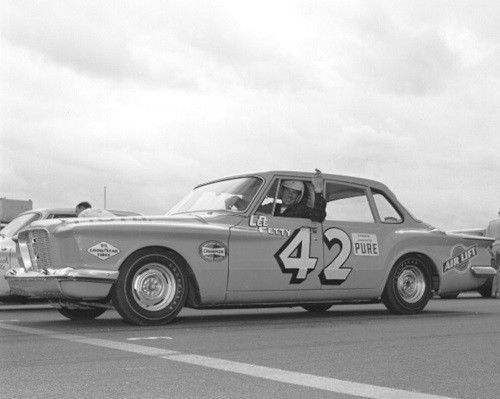







THIS DAY IN HISTORY
FEBRUARY 22, 1959
Lee Petty wins first Daytona 500
On February 22, 1959, Lee Petty defeats Johnny Beauchamp in a photo finish at the just-opened Daytona International Speedway in Florida to win the first-ever Daytona 500. The race was so close that Beauchamp was initially named the winner by William France, the owner of the track and head of the National Association for Stock Car Auto Racing (NASCAR). However, Petty, who was driving a hardtop Oldsmobile 88, challenged the results and three days later, with the assistance of news photographs, he was officially named the champ. There was speculation that France declared Beauchamp the winner in order to intentionally stir up controversy and generate publicity for his new race track.
Today, the 200-lap, 500-mile Daytona 500 is one of auto racing’s premiere events and the first race of the NASCAR season. France, a gas station owner and racing promoter, officially co-founded NASCAR in Daytona Beach in 1948. The following year, Lee Petty, a mechanic from North Carolina, began his racing career at the age of 35. He went on to win more than 50 races on NASCAR’s Grand National circuit (subsequently known as the Winston Cup from 1971 to 2003, the NEXTEL Cup from 2004 to 2007 and the Sprint Cup from 2008 onward) and three championships before being seriously injured in a crash during a qualifying event at Daytona in 1961. Following the crash, Petty drove in a handful of races before retiring from competition in 1964. He went on to found Petty Enterprises, which became NASCAR’s oldest and most successful racing team. In January 2009, Petty Enterprises merged with Gillett Evernham Motorsports and became Richard Petty Motorsports.
Petty’s son, Richard (1937- ) became one of the greatest drivers in NASCAR history, winning the Daytona 500 a record seven times between 1964 and 1981. Richard Petty’s sixth victory at Daytona, in 1979, also marked the first time the race was shown live, flag-to-flag, on television. Due to a snowstorm on the East Coast, a larger-than-anticipated TV audience tuned in to the race, which included a memorable fistfight between drivers Cale Yarborough and brothers Donnie and Bobby Allison, and the broadcast was a key moment in NASCAR’s rise to become one of America’s most popular spectator sports.
The Petty racing dynasty also includes Richard’s son, Kyle Petty, and Adam Petty, Kyle’s son, who died at the age of 19 in a crash at the New Hampshire International Speedway on May 12, 2000. Adam’s great-grandfather, Lee Petty, had died less than a month earlier, on April 5, at the age of 86.
0 notes
Text
Events 9.13
585 BC – Lucius Tarquinius Priscus, king of Rome, celebrates a triumph for his victories over the Sabines, and the surrender of Collatia. 509 BC – The Temple of Jupiter Optimus Maximus on Rome's Capitoline Hill is dedicated on the ides of September. 379 – Yax Nuun Ahiin I is crowned as 15th Ajaw of Tikal 533 – Belisarius of the Byzantine Empire defeats Gelimer and the Vandals at the Battle of Ad Decimum, near Carthage, North Africa. 1229 – Ögedei Khan is proclaimed Khagan of the Mongol Empire in Kodoe Aral, Khentii: Mongolia. 1437 – Battle of Tangier: a Portuguese expeditionary force initiates a failed attempt to seize the Moroccan citadel of Tangier. 1501 – Italian Renaissance: Michelangelo begins work on his statue of David. 1504 – Queen Isabella and King Ferdinand issue a Royal Warrant for the construction of a Royal Chapel (Capilla Real) to be built. 1541 – After three years of exile, John Calvin returns to Geneva to reform the church under a body of doctrine known as Calvinism. 1584 – San Lorenzo del Escorial Palace in Madrid is finished. 1609 – Henry Hudson reaches the river that would later be named after him – the Hudson River. 1645 – Wars of the Three Kingdoms: Scottish Royalists are defeated by Covenanters at the Battle of Philiphaugh. 1743 – Great Britain, Austria and the Kingdom of Sardinia sign the Treaty of Worms. 1759 – Battle of the Plains of Abraham: the British defeat the French near Quebec City in the Seven Years' War, known in the United States as the French and Indian War. 1782 – American Revolutionary War: Franco-Spanish troops launch the unsuccessful "grand assault" during the Great Siege of Gibraltar. 1788 – The Philadelphia Convention sets the date for the first presidential election in the United States, and New York City becomes the country's temporary capital. 1791 – King Louis XVI of France accepts the new constitution. 1808 – Finnish War: In the Battle of Jutas, Swedish forces under Lieutenant General Georg Carl von Döbeln beat the Russians, making von Döbeln a Swedish war hero. 1812 – War of 1812: A supply wagon sent to relieve Fort Harrison is ambushed in the Attack at the Narrows. 1814 – In a turning point in the War of 1812, the British fail to capture Baltimore. During the battle, Francis Scott Key composes his poem "Defence of Fort McHenry", which is later set to music and becomes the United States' national anthem. 1843 – The Greek Army rebels (OS date: September 3) against the autocratic rule of king Otto of Greece, demanding the granting of a constitution. 1847 – Mexican–American War: Six teenage military cadets known as Niños Héroes die defending Chapultepec Castle in the Battle of Chapultepec. American troops under General Winfield Scott capture Mexico City in the Mexican–American War. 1848 – Vermont railroad worker Phineas Gage survives an iron rod 1 1⁄4 inches (3.2 cm) in diameter being driven through his brain; the reported effects on his behavior and personality stimulate discussion of the nature of the brain and its functions. 1862 – American Civil War: Union soldiers find a copy of Robert E. Lee's battle plans in a field outside Frederick, Maryland. It is the prelude to the Battle of Antietam. 1882 – Anglo-Egyptian War: The Battle of Tel el-Kebir is fought. 1898 – Hannibal Goodwin patents celluloid photographic film. 1899 – Henry Bliss is the first person in the United States to be killed in an automobile accident. 1899 – Mackinder, Ollier and Brocherel make the first ascent of Batian (5,199 m – 17,058 ft), the highest peak of Mount Kenya. 1900 – Filipino insurgents defeat a small American column in the Battle of Pulang Lupa, during the Philippine–American War. 1906 – The Santos-Dumont 14-bis makes a short hop, the first flight of a fixed-wing aircraft in Europe. 1914 – World War I: The Battle of Aisne begins between Germany and France. 1922 – The final act of the Greco-Turkish War, the Great Fire of Smyrna, commences. 1923 – Following a military coup in Spain, Miguel Primo de Rivera takes over, setting up a dictatorship. 1933 – Elizabeth McCombs becomes the first woman elected to the New Zealand Parliament. 1942 – World War II: Second day of the Battle of Edson's Ridge in the Guadalcanal Campaign. U.S. Marines successfully defeated attacks by the Japanese with heavy losses for the Japanese forces. 1944 – World War II: Start of the Battle of Meligalas between the Greek Resistance forces of the Greek People's Liberation Army (ELAS) and the collaborationist security battalions. 1948 – Deputy Prime Minister of India Vallabhbhai Patel orders the Army to move into Hyderabad to integrate it with the Indian Union. 1948 – Margaret Chase Smith is elected United States senator, and becomes the first woman to serve in both the U.S. House of Representatives and the United States Senate. 1953 – Nikita Khrushchev is appointed General Secretary of the Communist Party of the Soviet Union. 1956 – The IBM 305 RAMAC is introduced, the first commercial computer to use disk storage. 1956 – The dike around the Dutch polder East Flevoland is closed. 1962 – An appeals court orders the University of Mississippi to admit James Meredith, the first African-American student admitted to the segregated university. 1964 – South Vietnamese Generals Lâm Văn Phát and Dương Văn Đức fail in a coup attempt against General Nguyễn Khánh. 1964 – Martin Luther King Jr. addresses a crowd of 20,000 West Berliners on Sunday, in Waldbühne. 1968 – Cold War: Albania leaves the Warsaw Pact. 1971 – State police and National Guardsmen storm New York's Attica Prison to quell a prison revolt, which claimed 43 lives. 1971 – Chairman Mao Zedong's second in command and successor Marshal Lin Biao flees China after the failure of an alleged coup. His plane crashes in Mongolia, killing all aboard. 1977 – General Motors introduces Diesel engine, with Oldsmobile Diesel engine, in the Delta 88, Oldsmobile 98, and Oldsmobile Custom Cruiser models amongst others. 1979 – South Africa grants independence to the "homeland" of Venda (not recognised outside South Africa). 1985 – Super Mario Bros. is released in Japan for the NES, which starts the Super Mario series of platforming games. 1987 – Goiânia accident: A radioactive object is stolen from an abandoned hospital in Goiânia, Brazil, contaminating many people in the following weeks and causing some to die from radiation poisoning. 1988 – Hurricane Gilbert is the strongest recorded hurricane in the Western Hemisphere, later replaced by Hurricane Wilma in 2005 (based on barometric pressure). 1989 – Largest anti-Apartheid march in South Africa, led by Desmond Tutu. 1993 – Israeli Prime Minister Yitzhak Rabin shakes hands with Palestine Liberation Organization chairman Yasser Arafat at the White House after signing the Oslo Accords granting limited Palestinian autonomy. 2001 – Civilian aircraft traffic resumes in the United States after the September 11 attacks. 2007 – The Declaration on the Rights of Indigenous Peoples is adopted by the United Nations General Assembly. 2008 – Delhi, India, is hit by a series of bomb blasts, resulting in 30 deaths and 130 injuries. 2008 – Hurricane Ike makes landfall on the Texas Gulf Coast of the United States, causing heavy damage to Galveston Island, Houston, and surrounding areas. 2013 – Taliban insurgents attack the United States consulate in Herat, Afghanistan, with two members of the Afghan National Police reported dead and about 20 civilians injured. 2018 – The Merrimack Valley gas explosions: One person is killed, 25 are injured, and 40 homes are destroyed when excessive natural gas pressure caused fires and explosions.
1 note
·
View note